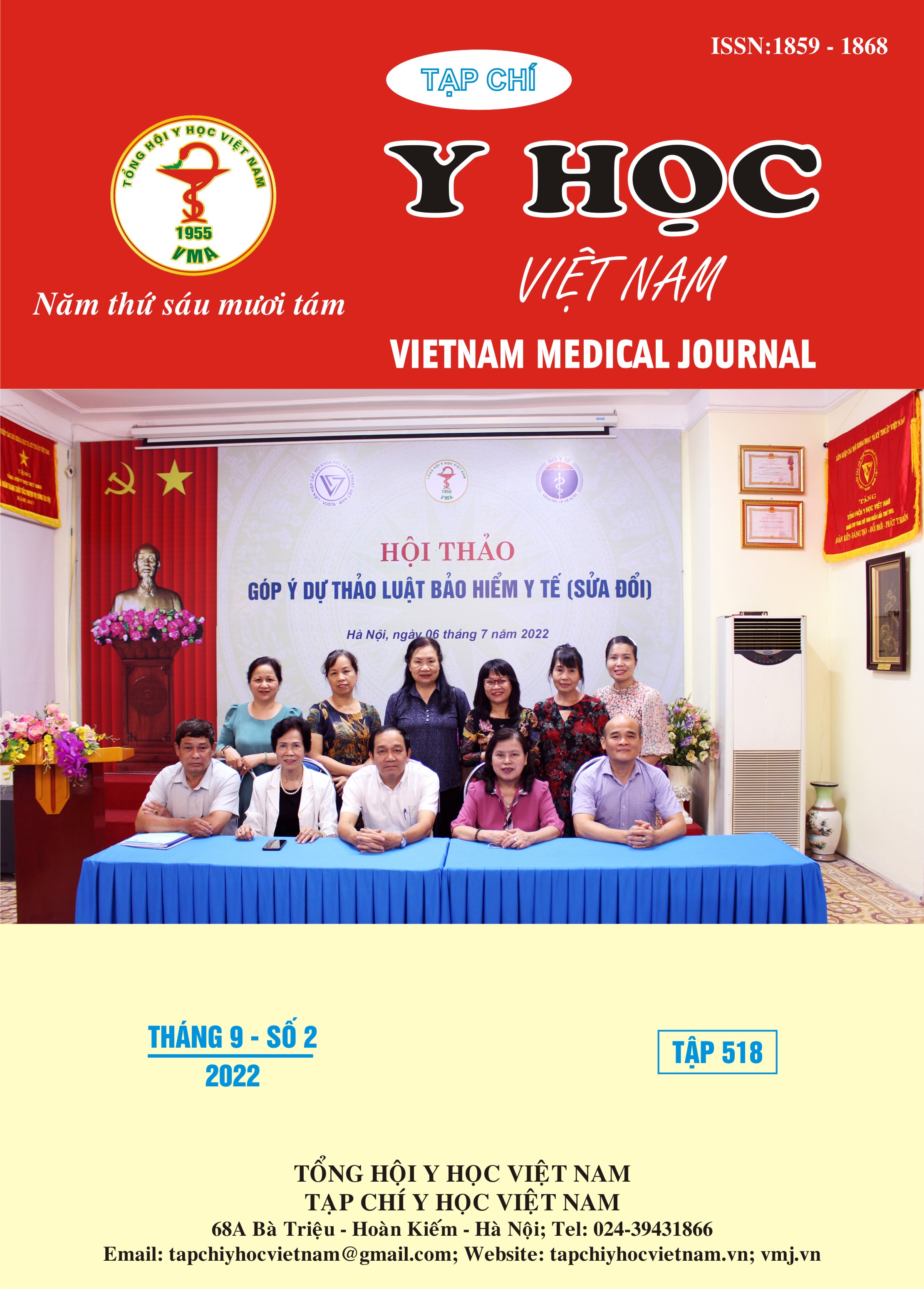RESEARCH ON APPROPRIATE STATIN USE IN HYPERTENSION TREATMENT WITH DYSLIPIDEMIA ON OUTPATIENTS AT DONG HAI DISTRICT HEALTH CENTER IN 2021-2022
Main Article Content
Abstract
Background: Hypertension is highly increasing and places a huge burden on the health system. In solutions to control hypertension, it is essential to adjust blood lipids to reduce the frequency of dyslipidemia, within this, statins are the drugs of first choice. However, Inappropriate use of drugs can lead to decreased effectiveness of treatment, while increasing cases of adverse drug reactions and drug errors. Objectives: To evaluate appropriate statin use and to determine several factors relevant to the inappropriate statin use in hypertension treatment outpatients with dyslipidemia at the Dong Hai district Medical Center in 2021-2022. Materials and methods: A cross-sectional descriptive study. Research on 195 prescriptions of outpatients diagnosed with hypertension with dyslipidemia being treated at Dong Hai District Health Center from 2021, May 1 to 2022, February 28. Results: The rate of using atorvastatin was the highest at 72.3%, the rate of using pravastatin was 20.5%, and the lowest rate was 7.2% with fluvastatin. The rate of overall appropriate prescribing of statin was 62.1%. Within this, appropriate dosing, indication, dosing frequency and drug interaction were 70.3%, 93.3%, 98.5%, 99.5% and 99.5%, respectively. There was no contraindication case in using statin. Physicians with post-graduate degrees had an appropriate rate of prescribing statins 3.13 times higher than physicians with university degrees (p<0.001); patients with 3 or fewer comorbidities had an appropriate rate of prescribing statins 10.52 times higher than patients with more than 3 comorbidities (p<0.001); The number of drugs in the prescribing with 5 drugs or less had an appropriate rate of statin prescribing nearly 3.89 times higher than that of the prescription with more than 5 drugs (p<0.001). Conclusion: The research results show that it is necessary to investigate and recognize the inappropriate issues in prescribing statins to serve as a basis for creating effective training programs on statin use.
Article Details
Keywords
Statin, dyslipidemia, hypertension
References
2. Lê Trọng Dũng, Hà Thị Thu Thủy, Bùi Đặng Lan Hương (2020), “Hiệu quả hướng dẫn các khuyến cáo mới trong điều trị rối loạn lipid máu,” Y học cộng đồng, 59(6), , tr. 69–74.
3. F. Mach and et.al. (2020), “2019 ESC/EAS Guidelines for the management of dyslipidaemias: lipid modification to reduce cardiovascular risk,” Eur. Heart J., 41, pp. 111–188.
4. C. Morival, R. Westerlynck, G. Bouzillé and et.al. (2018), “Prevalence and nature of statin drug-drug interactions in a university hospital by electronic health record mining.,” Eur. J. Clin. Pharmacol.,74(4), pp. 525–534.
5. S. Irawati andet. al.(2020), “Key factors influencing the prescribing of statins: a qualitative study among physicians working in primary healthcare facilities in Indonesia”,BMJ Open, 10(6), pp. e035098.
6. M. E. Tinetti, S. T. J. Bogardus, and J. V Agostini (2004), “Potential pitfalls of disease-specific guidelines for patients with multiple conditions.”,N. Engl. J. Med., 351(27), pp. 2870–2874.
7. M.-C. Weng andet.al.(2013), “The impact of number of drugs prescribed on the risk of potentially inappropriate medication among outpatient older adults with chronic diseases.”,QJM, 106(11), pp. 1009–1015.
8. L. Santoyo-Fexas andet.al. (2020), “AB1292-HPR Number of Drugs in the Prescription, A Predisposing Factor for Medication Errors In Rheumatology”,Ann. Rheum. Dis., 79(1), pp. 1936.


